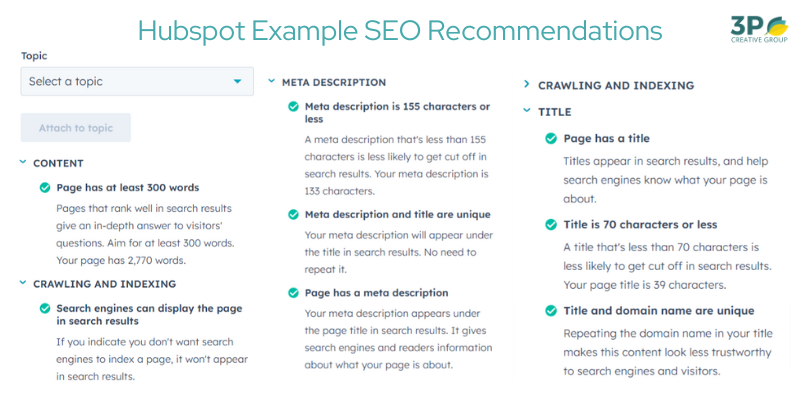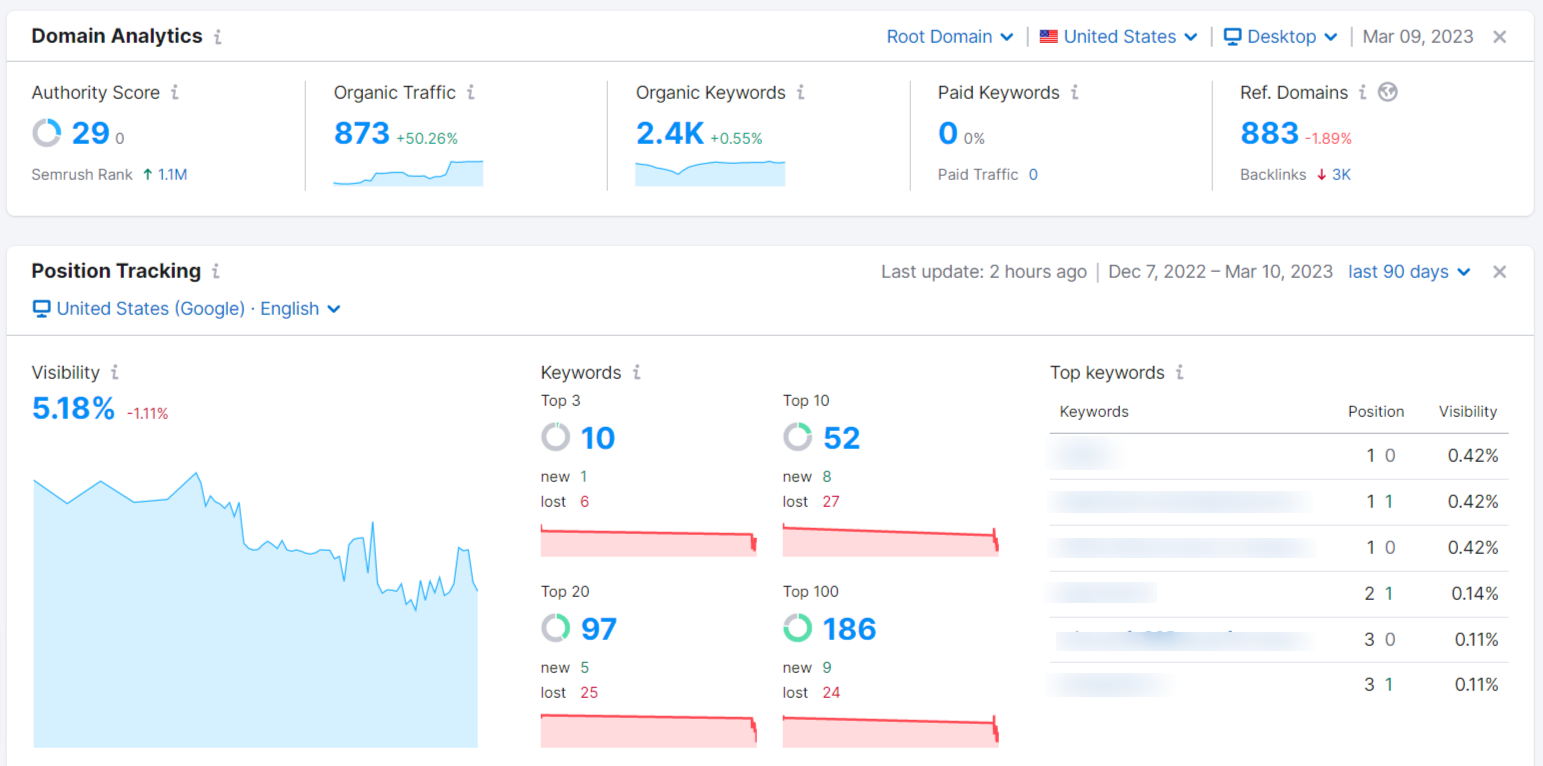Unlocking the Power of Content-Centric SEO
Marketing professionals looking to improve their website's visibility and reach need look no further than content-centric SEO. This powerful strategy allows businesses to increase organic search engine rankings, build trust with potential customers, and maximize the return on investment from digital marketing efforts.
In this article, we'll examine the fundamentals of content-centric SEO — how it functions in reality — and provide advice for getting started. So if you're ready to take your online presence up a notch, let's dive into the world of content-centric SEO.
- What is Content-Centric SEO?
- Keyword Research for Content-Centric SEO
- Optimizing Your Website for Content-Centric SEO
- Measuring the Impact of Content-Centric SEO
- Tips for Getting Started with Content-Centric SEO
- FAQs in Relation to Content-Centric SEO
What is Content-Centric SEO?
Content-centric SEO is a method of optimizing your website to rank higher in search engine results pages (SERPs). It involves creating and optimizing content that is tailored to the keywords you want to target because those are questions your potential buyers and customers are asking. This type of optimization helps improve visibility, traffic, and conversions.
Definition of Content-Centric SEO
Content-centric SEO focuses on creating quality content that appeals to both users and search engines. The goal is to create content that answers user queries while also targeting relevant keywords so it can be found more easily by potential customers. To optimize your content for SEO, research the topics that are popular in your sector and identify keywords with high search volumes and low competition. Once you’ve identified these topics and keywords, you can then create content around them such as blog posts, articles, videos, or infographics.
Content-centric SEO offers a plethora of benefits, such as enhanced organic rankings for the desired keywords, increased website traffic, elevated engagement metrics like time spent on page and improved brand awareness through augmented visibility online. Furthermore, this method can lead to higher conversion rates due to more qualified leads being driven from organic searches with an overall surge in ROI resulting from reduced cost per click (CPC) costs compared to paid advertising methods like Google Ads or Facebook Ads campaigns.
Content-centric SEO is an effective technique for firms that wish to boost their search engine rankings and visibility organically. With the right keyword research, you can maximize your content's potential with content-centric SEO. Next, we'll discuss how to identify relevant keywords and analyze competitors' strategies.
Keyword Research for Content-Centric SEO
Keyword research is an essential part of content-centric SEO. Comprehending the terms used by your desired demographic can aid in producing content that is considered both appropriate and beneficial to them. To do this, it’s important to identify relevant keywords and utilize long-tail keywords in order to optimize your website for search engines. Additionally, analyzing competitors' keywords can give you insight into what works for them and help inform your own keyword strategy.
Before selecting any specific terms, it is important to understand whom your content will be directed towards so that the correct words and phrases can be chosen for their search. Once you have a good understanding of your target audience, begin exploring the words and phrases they are likely to use when searching for information related to what you offer on your website.
Single words (e.g., “marketing”) and multi-word phrases (e.g., “inbound marketing services”) can both be effective for targeting your audience online. You can also leverage tools like Google Trends or Answer The Public which allow users to explore related searches around a given topic or phrase — providing additional keyword ideas for further exploration.
Long-tail keywords can be a great way to capitalize on more specific searches and drive valuable traffic to your website. These phrases tend to have higher intent than single-word terms, making them ideal for targeting people actively looking for solutions rather than just gathering information about a particular topic area. Leveraging long-tail keywords in your content strategy can help you stay ahead of the competition and attract qualified leads who are ready to take action. So don't forget to include these powerful search terms in your keyword research.
Keyword research for content-centric SEO is a vital part of any successful digital marketing strategy and should not be overlooked. By carefully selecting the right keywords, you can maximize your content's reach and attract more visitors to your website. Next, we'll explore how to optimize your website for this type of SEO.
Optimizing Your Website for Content-Centric SEO
Content-oriented SEO is an imperative part of improving your website for organic search engine rankings. By creating quality content, optimizing meta tags and headers, and structuring URLs and internal links, you can ensure that your website is properly indexed by search engines and visitors have a positive user experience.
Creating Quality Content
Quality content should be the foundation of any successful SEO strategy. Your content should provide valuable information to users while also targeting specific keywords relevant to your industry or niche. To maximize impact, focus on topics that are trending in the news or within social media circles. Additionally, use visuals such as images or videos when possible to make your content more engaging for readers.

Optimizing Meta Tags & Headers
Meta tags and page titles play an important role in how webpages appear in search results pages (SERPs). When crafting these elements, include targeted keywords related to the page’s topic along with other descriptive words like “best” or “how-to” if appropriate. Also consider adding modifiers like dates or locations when applicable; this helps differentiate similar pages from one another in SERPs.
URLs should be structured logically and include relevant keywords whenever possible (e.g., www.example.com/keyword-rich-page). Additionally, internal links throughout your site help establish relationships between different pieces of content which makes it easier for both humans and bots to navigate around without getting lost, giving users additional options for exploring related topics further.
Optimizing your website for content-centric SEO is an important step towards increasing organic traffic and improving SERP visibility. Analyzing the outcomes of your optimization efforts can help you understand how successful they are in achieving desired results.
Measuring the Impact of Content-Centric SEO
Measuring the impact of content-centric SEO is essential for any business looking to maximize their online presence.
Tracking Organic Website Traffic Growth (Duh!)
Tracking the growth of your organic website traffic allows you to identify which strategies are working and which need to be adjusted or improved. This can include analyzing website visits, unique page views, time spent on pages, bounce rates, and more.
But it requires an understanding of web analytics tools such as Google Analytics. These platforms provide insights into website performance including user demographics, geographic locations of visitors, devices used by visitors when accessing the site, and more. By monitoring these metrics over time it’s possible to track progress towards specific goals like increasing overall website visits or decreasing bounce rates.

Rankings & SERP Visibility
Monitoring rankings and SERP visibility will give insight into how your content is performing in comparison to competitors as well as what keywords are driving the most traffic.
This involves tracking where a particular webpage appears within search engine result pages (SERPs) for certain keywords over time using keyword ranking tools like SEMrush or Ahrefs Rank Tracker. It’s also important to analyze competitor websites so that adjustments can be made if necessary in order for your content to remain competitively ranked within SERPs for target keywords.
Additionally, this data provides further insights into which topics should be focused on when creating new content pieces as well as areas where existing pieces could be optimized with additional targeted keywords or phrases that may have been previously overlooked.
What Click Through Rates Tell You
Lastly, click-through rate (CTR) gives an indication of how successful a title tag or meta description is in convincing prospective customers that the associated content contains pertinent information they are searching for after viewing it on SERPs.
A high CTR indicates that people perceive value from what they read, whereas low numbers signify that something needs to be improved either by adjusting wording choices within titles/descriptions themselves or by making changes directly within the article before republishing with updated metadata tags. In order to succeed in the cutthroat digital environment, marketers must take advantage of their most effective methods.
Measuring the impact of content-centric SEO is essential for any successful digital marketing strategy, as it allows you to accurately assess your efforts and adjust accordingly. To kick off a content-centric SEO strategy, here are some ideas to consider.
Tips for Getting Started with Content-Centric SEO
Starting a content-centric SEO strategy can be intimidating, but with the right approach and tools, it doesn’t have to be. Developing an effective strategy is key to success. Invest in quality resources and tools that will help you create content quickly and efficiently while monitoring your progress.
Develop an Effective Strategy
Begin by researching relevant keywords for your industry or product. Identify long-tail keywords that are more specific than general terms and determine which ones would benefit from being targeted through SEO. Once you have identified the best keywords for your website, create content around them. This will help increase organic traffic as well as rankings on SERPs (search engine results pages). Utilize internal links within the content to further boost its value. Additionally, consider using external links when appropriate; these can improve visibility of your site and provide additional information to readers about related topics.
Investing in the right resources and tools is essential for a successful SEO strategy. Look into keyword research software like Ahrefs or SEMrush to uncover valuable long-tail keywords that are likely to generate higher amounts of organic traffic compared to generic search terms. Also consider investing in a CMS platform such as WordPress or Drupal to simplify content creation. Utilizing a CMS can help streamline the process of creating new content regularly, reducing time and money spent.
FAQs in Relation to Content-Centric SEO
What is SEO-centric content?
SEO-centric content is content created with the intention of optimizing for search engine visibility. It involves researching and utilizing relevant keywords, phrases, and topics to target potential customers searching online. SEO-centric content also includes creating quality content that provides value to readers while incorporating the targeted keywords into headlines, subheadings, body copy, meta descriptions, and more. The goal is to increase organic website traffic by appearing higher in search engine results pages (SERPs).
What is a good SEO article?
Good SEO articles should be well-researched, structured, and written with an active voice. They should use relevant keywords throughout the article to ensure maximum visibility in search engine results pages (SERPs). Additionally, they must include links to other authoritative websites for reference or further reading. Lastly, good SEO articles should have a clear call-to-action that encourages readers to take action after consuming the content. With these elements combined, your website will rank higher on SERPs and attract more visitors who are looking for answers related to your industry.
Why is content so important for SEO?
Content is critical for SEO as it enables search engines to comprehend the purpose of a website and how pertinent it is in relation to a user's query. Content can also be used to create backlinks, which are important signals of authority in the eyes of search engines. Quality content that contains keywords related to a topic will help boost visibility and ranking in organic searches, resulting in more traffic and conversions. Content can be employed to form connections with consumers, offering them helpful data that they may use when deciding on a purchase.
What is the most overlooked aspect of SEO?
Identifying and targeting appropriate keywords for website content is an essential, yet often overlooked part of SEO. Many marketers overlook the importance of correctly pinpointing and targeting pertinent keywords for their website content, which can have a great effect on organic search engine rankings. Keyword research should be an ongoing process that involves monitoring competitors’ activities, analyzing industry trends, understanding user intent, and identifying opportunities for optimization. Additionally, focusing on long-tail keywords instead of generic terms will often yield better results in terms of traffic and conversions. Ultimately, effective keyword selection is essential if you want your site to rank well in search engines and attract more visitors from organic sources.
Conclusion
It requires careful keyword research, optimized content creation, and consistent monitoring to ensure success. By employing an effective content-centric SEO strategy, you can drive up your website's organic traffic and boost its visibility in search engine results. Take these tips into account when developing a content-centric SEO plan that works best for you.
Let us help you grow your business with content-centric SEO strategies. Our experienced team of marketing and sales coaches can guide you through the inbound marketing process to maximize success.
Share this
You May Also Like
These Related Stories

10 Signs Your SEO Company Is Ripping You Off

6 Reasons Why You Are Not Ranking In Google Search Results

.png?width=250&height=125&name=TrustBuilderLogoWhiteTranspBackgr(250x125%20px).png)



No Comments Yet
Let us know what you think